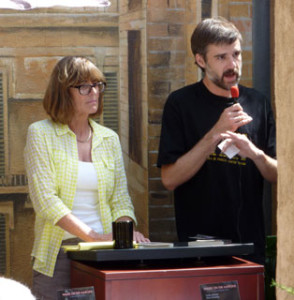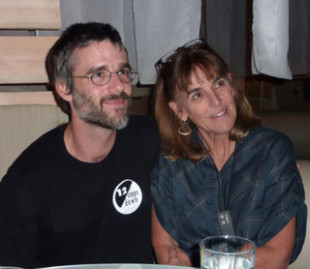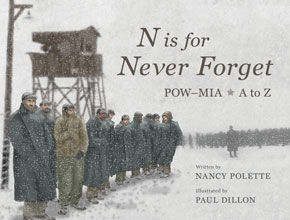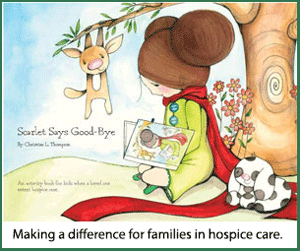Breaking the silence and challenging the stigma of mental illness is not an easy decision to make. When author Kathy Brandt felt it was time to share her story, she knew she wouldn’t be able to write about it alone. It took years, but she had transitioned from scared parent of a child diagnosed with mental illness to an advocate and presenter in the mental health community. She wanted to share her experiences, so she approached her son, Max Maddox, with an invitation to write a book together. The invitation culminated in the publishing of their cowritten book Walks on the Margins: A Story of Bipolar Illness.
“Ultimately, I felt like this was his story,” Kathy says. “There is no way I would have written this without him.”
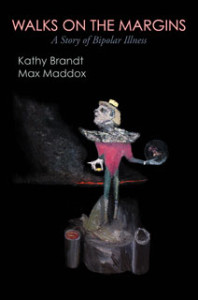 Kathy processes the world through writing, while Max processes the world through art. Coming together to write their story challenged and changed both of them. Their willingness to expose the painful parts of their experiences has started a necessary conversation in the mental health community and provided comfort for families experiencing similar challenges.
Kathy processes the world through writing, while Max processes the world through art. Coming together to write their story challenged and changed both of them. Their willingness to expose the painful parts of their experiences has started a necessary conversation in the mental health community and provided comfort for families experiencing similar challenges.
Max was diagnosed with bipolar disorder, specifically bipolar 1, as a college student at Grinnell College in Iowa. His first traumatic episode resulted in a trip to Mercy Psychiatric Hospital in Des Moines, Iowa, and a necessary trip back to Colorado Springs with his mom.
The crises of mania and depression ruled their lives for many years. They started the writing project in the middle of recovery, about two to three years past the worst of the storm. Writing the book was certainly part of the healing for both of them. Exchanging chapters, Max and Kathy shared bits and pieces of the long struggle they endured through the worst parts of his illness. The reader gets a clear sense of Max’s mania, his depression, and Kathy’s journey in and through all of it.
“It took us five years to write it. There were so many interruptions. We would be writing and he would have episodes,” Kathy says.
Adjusting to life with a mental illness does not include achieving a cure, but rather an adaptation to better managing the effects of the illness. Writing about their experiences didn’t change what life was throwing at them, but it did offer a chance for Max and Kathy to face their own pain in a meaningful way. Word by painful word, the reality of what the other had endured was revealed.
Kathy writes, “My heart broke for Max, and then I was angry with him. I felt overwhelmed. Still recovering from the last episode, I wondered if I could get through another.”
Max was suffering from an episode, and in his description shows his differing perspective. He writes, “And so I cried as I let my arm fall beneath the fabric to feel the hand of another human being, dying to believe someone was still on the other side.” Sharing their experiences through writing helped them enhance their mother/son relationship and forge an even deeper relationship as friends.
Kathy explains, “We’ve always been really close, but writing the book certainly brought us closer.”
The book-writing helped to heal their strained relationship, but writing was a part of Max’s recovery from the throes of mental illness, too.
“I saw in it an opportunity to engage with writing as a cathartic endeavor,” he says.
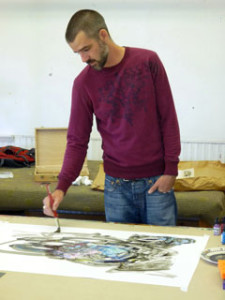 At the time, Max was studying art at grad school in Pennsylvania, and he was already employing artistic expression as part of his therapy. The book-writing invitation was a challenge to create an artistic presentation with words.
At the time, Max was studying art at grad school in Pennsylvania, and he was already employing artistic expression as part of his therapy. The book-writing invitation was a challenge to create an artistic presentation with words.
It was not an easy proposition.
“On one end, there were questions about how I was going to reconstruct events,” he says. “My challenge from the beginning was finding a voice to describe it. It was hard to try to reinvigorate that state of being.”
Max admits trauma can create a blind spot for the traumatized.
Moving from his medium of art to a medium of writing was not as difficult as he expected. “It was a natural movement toward writing. I had become accustomed to working from irrational toward the rational. During the writing process, I found I was losing myself to language, and I would just let it unearth its own mania or depression. The challenge is always to bring art into relationship with the world.”
His mom was duly impressed with his aptitude for writing, too. She explains she knew he could put sentences together. He was a college grad after all. But she didn’t imagine he was as poetic and artistic in writing as he is.
Kathy says, “When I saw that first chapter put together, I was just amazed at his writing.” She can see the art there.
Max says, “Art is not just about creating alone—the next step is forging a relationship with the world through the products of your work.”
Part of the connection with the “art” of the book and the relationship of the product to the world happens in the joint presentations in which Max and Kathy share their story. The pair present for the National Alliance on Mental Illness (NAMI) and for local organizations working to provide resources for those struggling with mental illness. Their message and work has been positively received.
Max says, “I like hearing a gasp in the audience. I know someone is having an emotional response.” He says those emotional reactions happen most often when they are reading from the book. “The experience of the presentations changes once you read.”
People start to make sense of something through Max and Kathy’s story. “All skepticism starts to fall away,” Max says.
A lot of the people who gather into a conversation about mental health are consumed with tense opinions about treatment or policy. There are a lot of emotions involved regarding how healing can be achieved.
Max says, “When we read from our own experience, people forget about the debates. We are not telling them what to do or what their experiences are. Our experience permeates conversation and obliterates the other talking. Everyone starts to be on the same side or,” as he jokingly admitted, “on the same page when our story is shared out loud.”
“I’m always thinking about that person who’s experiencing this for the first time.” He wants this book in the hands of the people who are going through it. He’d love “to get into someone’s heart, revert them from a disaster. I want the book to be a sign of hope that what they’re going through has been gone through before. I want to save a life or two.”
From readers and attendees at their presentations, Max and Kathy often hear, “This is my story. Thank you for telling it.”
They start most of their presentations with a reading and leave plenty of time on the back end for questions and answers.
“People really want to hear from Max,” Kathy says. It’s an emotional experience to watch how people receive Max and his story. “I want him to know how much this means to other people.”
Kathy says, “I was worried about publishing the book for Max. He’s really putting himself out there. He’s talking about his illness now, and I can see how good it is for him and for me.”
She adds, “For people who struggle with mental illness, when they read the book, they don’t feel so alone. I want it to be healing for them, too.”
—–
The cover art for Walks on the Margin is one of Max’s pieces called The Life and Death of William Somers. Somers, a jester, is portrayed as a figure standing on a performance platform. In one hand, he holds a mysterious orb and, in the other, a coin for deposit. It is a balancing act of the solo performer, much like the delicately-balanced writing in the book.
Max was encouraged to read Maurice Blanchot’s Thomas the Obscure and Gérard de Nerval’s Aurelia. Both books address mental illness from the perspective of the mentally ill. Max was fascinated by their presentations and hoped to create something similar.
Kathy Brandt blogs about mental illness on her website: www.KathyBrandtAuthor.com
Facebook: /KathyBrandtAuthorPage
Twitter: @KathyBrandt1
Max’s blog about mental illness: www.WalksOnTheMargins.com
Max’s art website: www.MaxMaddox.net
National Alliance on Mental Illness (NAMI): www.NAMI.org
Mental Health America: www.MentalHealthAmerica.net
Meagan Frank is senior writer at Books Make a Difference. She is the author of the Choosing To Grow series, a national speaker, and coach. Connect with Meagan on the web, Facebook, Twitter, or email.

